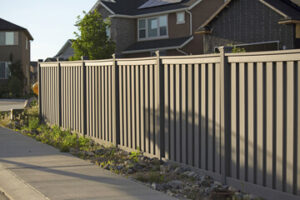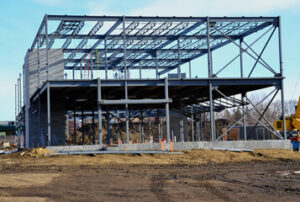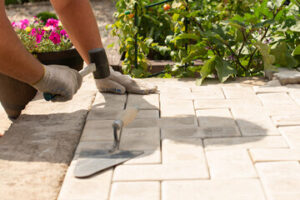Wood Gaston Fence offers a range of styles that enhance the look of your property and add privacy to your home. They also provide a safe place for pets and children to play outdoors.

Pressure treated pine and spruce are the most affordable options while cedar and cypress have higher price tags but are a longer lasting choice due to their natural rot resistance and insect repellent qualities.
Wooden fences are a popular option for homeowners seeking a natural and attractive yard perimeter. They are available in a variety of styles, colors, and finishes to suit any landscape and complement home design. While the durability of a wooden fence is dependent on several factors, proper maintenance can extend its lifespan.
Regularly cleaning your wood fence with a hose or broom is important for preserving its appearance and protecting against damage and rot. Routine cleanings should also include trimming nearby vegetation. Overgrown bushes and vines can rub against or put pressure on the wooden surface, causing damage over time. Properly trimming vegetation prevents this problem and also enhances the overall appearance of your yard.
The type of wood you choose for your fence can impact its longevity as well. Cedar and cypress are popular options because they are rot resistant and contain natural insect-repelling oils. Redwood is another durable choice, although it is typically more expensive. Pressure-treated wood is an economical alternative that is also rot resistant.
Sealing and staining are important steps for protecting your fence from moisture, UV rays, and other damaging elements. Applying a high-quality sealant creates a protective barrier that shields the wood, while stain adds color and additional protection.
Keeping your fence free of rot and fungus is critical to extending its lifespan. If rot or fungus develops, it is essential to treat it promptly before it spreads and weakens the entire structure. This process typically involves cutting out affected areas and replacing them with new, treated or sealed wood. Insect infestations can also drastically reduce the lifespan of a wooden fence, so it is essential to keep them away from your property as much as possible.
Maintenance
Wooden fences require regular maintenance and care to keep them in good condition and looking beautiful. This includes routine inspections to check for signs of damage or deterioration, such as loose boards, exposed nails, wood rot, fading stains, mold, mildew, and insects. Promptly addressing any issues can prevent them from getting worse and potentially costing you more in repairs down the road.
To protect your wooden fence against moisture, it’s important to apply a waterproof sealant or wood preservative. Choose a treatment that’s compatible with your wood type and climate to provide the best results.
Once you’ve applied a protective treatment to your fence, it’s important to perform regular maintenance on it. This includes cleaning, staining, and trimming nearby vegetation. Cleaning your wooden fence yearly will help remove dirt, grime, and mildew. You can use a pressure washer on a low setting, or you can scrub the surface with a brush and a mixture of water and mild detergent. Be sure to rinse the surface thoroughly afterward to ensure all cleaning agents are removed.
Staining your fence every 2-3 years is also a great way to maintain its appearance and extend its lifespan. Make sure to choose a high-quality stain or paint that’s appropriate for your wood type and climate. This will help protect the wood from moisture, UV damage, and fading.
It’s also a good idea to trim any trees or vines growing near your wooden fence. Overgrown bushes and trees can rub against and scrape your wooden fence, which can cause damage over time. This is especially true if they’re continually soaked by rain or sprinkler water, as they will absorb moisture and speed up the rotting process.
Curb Appeal
A fence is more than just a practical addition to your property, it’s also an opportunity to enhance the overall aesthetic of your home. A well-designed wooden fence can elevate the look of your property and make it stand out in the neighborhood. Choosing a fence style and material that complements your home’s architectural style, landscaping, and exterior paint color is one of the best ways to boost curb appeal.
Wood fences are a popular choice because of their warmth and natural beauty. They are available in a variety of colors and styles, from traditional picket fences to privacy fences. Wood fences can be stained or painted to match the color scheme of your home. They can also be combined with stone or other materials to create a unique look that blends seamlessly with your landscape surroundings.
The key to achieving a great looking wood fence is regularly maintaining it. Wood is an organic material that can deteriorate over time if not properly maintained. This can lead to dry rot, splitting, warping, and termite or other insect damage. Regular maintenance, including pressure washing and staining, can help prevent these issues and extend the life of your wooden fence.
A wood fence can enhance your home’s curb appeal with unique add-ons and customizations. For example, adding landscaping features like climbing plants and flowers to a wooden fence can add color and contrast to your home’s exterior. You can also use trellis’ and archways to add height and visual interest to your yard. Other creative fencing options include gabion walls, which are constructed of wire cages filled with stones, to create a unique and modern look.
Privacy
Wood fences offer a natural, warm aesthetic that provides privacy and security to your home. Depending on your choice of material, they can also be cost-effective and provide better durability than chain link or iron fences. However, a wood fence is prone to damage and requires regular maintenance. Consult your fencing contractor for more information on types, materials, and design options to create a beautiful, safe backyard.
Choosing the right wooden fence will ensure that your property is well-protected from unwanted guests and pests. It’s important to choose a material that will resist rot, termite, and moisture damage. Cedar, redwood, and cypress are all great choices for their resistance to these issues.
Other factors to consider include the style of your fence and installation procedure. The fence layout and post placement will determine how sturdy and stable your fence is. The layout should be measured and marked accurately to ensure that the posts are at consistent depths. In addition, you should use a treated post to increase its longevity.
There are many options for the style of your wooden fence, including picket and lattice designs. Picket fences can be crafted from a variety of materials, including cedar and pressure-treated pine. They’re also easy to customize by adding gates and other decorative elements. Lattice fences made from crisscrossing strips can add visual interest and are a good choice for dividing an outdoor space or hiding unsightly items. It’s also important to choose a contractor with experience installing these fences. They can help you find the right option for your budget and ensure that the installation process is completed properly. This will prevent the fence from buckling or warping over time.
Security
A well-crafted wooden fence can serve as a solid barrier against unwanted intruders. It can be bolstered with additional security measures such as lights, closed-circuit television, a staffed observation post, and intrusion detection systems to improve overall perimeter protection.
Moreover, a well-designed wooden fence can provide microclimates within your garden, helping nurture different plants and flowers that require specific conditions to thrive. For example, a well-placed wooden fence can help shield your plants from strong winds that may otherwise damage them. Likewise, it can create shaded areas that can benefit certain plant species like ferns and some flowering bushes that thrive in indirect sunlight.
Wooden fences can be designed to serve as more than just a boundary marker; they can also act as a canvas for personal expression. With options for staining and painting, homeowners can transform their wooden fencing into a standout feature of their yard. Cedar, in particular, stands out with its innate durability and rich coloration. Its natural oils make it resistant to heartwood decay and insect infestation, making it an ideal material for constructing a backyard fence.
Another reason to choose a wood fence is its ability to provide privacy. Whether you’re hosting a barbecue with family and friends or finding your inner zen through gardening, privacy is essential to enjoying these outdoor spaces in peace. A wood fence can prevent prying eyes from seeing into your property and allowing you to unwind without the distractions of neighbors and passersby.
Aside from providing privacy, a wooden fence can also reduce noise pollution. In urban environments, a wooden fence can mitigate unwanted noise from traffic, construction, or nearby activities. This can be a major relief for households with children or pets that might be sensitive to noise.

